Discover 11 hidden attractions, cool sights, and unusual things to do in Vincennes (United States). Don't miss out on these must-see attractions: Grouseland, St. Francis Xavier Cathedral and Library, and Lincoln Memorial Bridge. Also, be sure to include George Rogers Clark National Historical Park in your itinerary.
Below, you can find the list of the most amazing places you should visit in Vincennes (Indiana).
Table of Contents
Grouseland
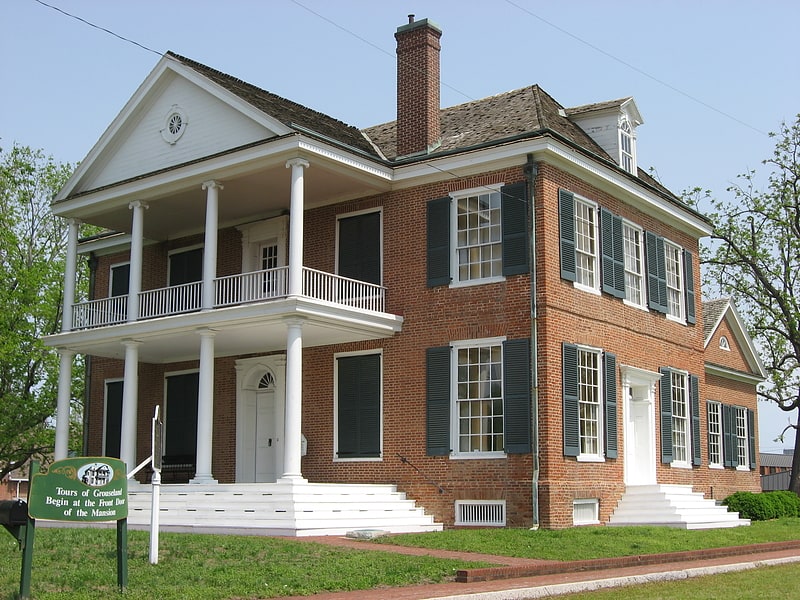
Grouseland, the William Henry Harrison Mansion and Museum, is a National Historic Landmark important for its Federal-style architecture and role in American history. The two-story, red brick home was built between 1802 and 1804 in Vincennes, Indiana, for William Henry Harrison during his tenure from 1801 to 1812 as the first governor of the Indiana Territory. The residence was completed in 1804 and Harrison reportedly named it Grouseland due to the abundance of grouse in the area.[1]
Address: 3 W Scott St, 47591-1433 Vincennes
St. Francis Xavier Cathedral and Library
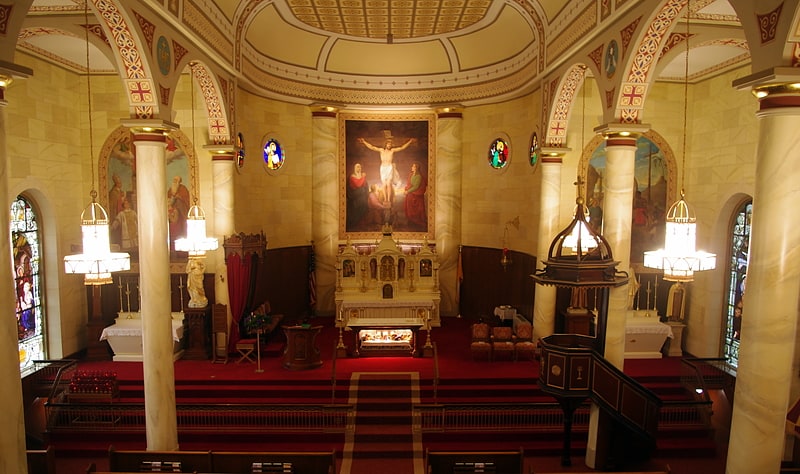
Basilica in Vincennes, Indiana. The St. Francis Xavier Cathedral is a parish of the Roman Catholic Church in Vincennes, Indiana, under the Diocese of Evansville. Named for Francis Xavier, a 16th-century Jesuit apostle, it is located opposite George Rogers Clark National Historical Park at 205 Church Street, within the Vincennes Historic District.
Jesuit missionaries established St. Francis Xavier parish around 1734, making it the oldest Catholic parish in Indiana; its earliest parish records date from 1749. The present Greek Revival-style basilica church, built on or near the site of two earlier Catholic churches, dates from 1826. In 1834, when Pope Gregory XVI erected the Diocese of Vincennes, St. Francis Xavier was elevated to a cathedral and served as the seat of the episcopal see from 1834 to 1898. On 14 March 1970 Pope Paul VI elevated St. Francis Xavier Cathedral to the status of basilica (minor basilica), "an honor reserved for only the most historic churches."
Between 1834 and 1898 two of St. Francis Xavier's priests became bishops (Benedict Joseph Flaget, Bishop of Bardstown, and Célestine de la Hailandière, Bishop of Vincennes), and several served as vicars general or seminary rectors. Between 1837 and 1882 seventy-five priests were ordained at St. Francis Xavier, including Michael E. Shawe, the first priest ordained in Indiana. Bishop John Stephen Bazin's episcopal consecration at St. Francis Xavier in 1847 was the first to be conducted in the state. The remains of the first four Bishops of Vincennes (Simon Bruté de Rémur, Célestine Guynemer de la Hailandière, John Stephen Bazin, and Jacques Maurice de St. Palais) are buried in St. Francis Xavier's crypt. The basilica was added to the National Register of Historic Places in 1976.[2]
Address: 205 Church St, 47591-1133 Vincennes
Lincoln Memorial Bridge
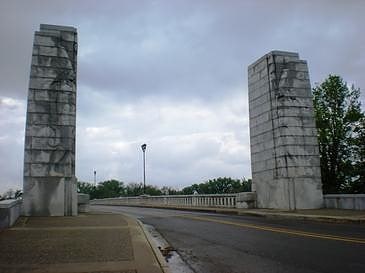
Deck arch bridge in Knox County, Indiana. Lincoln Memorial Bridge is a deck arch bridge carrying U.S. Route 50 Business over the Wabash River between Vincennes, Indiana and Lawrence County, Illinois. It is said to mark the point where Abraham Lincoln crossed the Wabash River on his way to Illinois in 1830, and a sculptural installation, the Lincoln Trail State Memorial, marks the western end of the bridge.[3]
George Rogers Clark National Historical Park
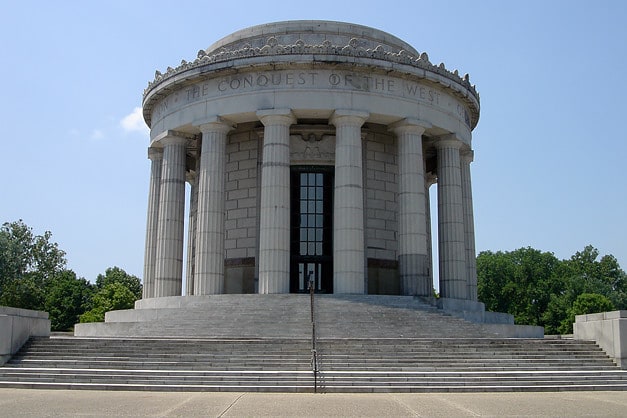
National park in Vincennes, Indiana. George Rogers Clark National Historical Park, located in Vincennes, Indiana, on the banks of the Wabash River at what is believed to be the site of Fort Sackville, is a United States National Historical Park. President Calvin Coolidge authorized a classical memorial and President Franklin D. Roosevelt dedicated the completed structure in 1936.
On February 25, 1779, Lieutenant Colonel George Rogers Clark, older brother of William Clark, led the capture of Fort Sackville and British Lt. Governor Henry Hamilton as part of the celebrated Illinois Campaign, which lasted from 1778 to 1779. The heroic march of Clark's men from Kaskaskia on the Mississippi River in mid-winter and the subsequent victory over the British remains one of the most memorable feats of the American Revolution.
In 1966, Indiana transferred the site to the National Park Service. Adjacent to the memorial is a visitor center which presents interpretive programs and displays. The center is situated on South 2nd Street in Vincennes. The site is located in the Vincennes Historic District.[4]
Forts of Vincennes

During the 18th and early 19th centuries, the French, British and U.S. forces built and occupied a number of forts at Vincennes, Indiana. These outposts commanded a strategic position on the Wabash River. The names of the installations were changed by the various ruling parties, and the forts were considered strategic in the French and Indian War, the American Revolutionary War, the Northwest Indian War and the War of 1812. The last fort was abandoned in 1816.
The settlement around the forts was best known as the territorial capital of the Northwest Territory (later, the Indiana Territory). The best known event was Gen. William Henry Harrison's mustering of forces at Vincennes just prior to his campaign against the Indian capital at Prophetstown in Tippecanoe, culminating in the Battle of Tippecanoe in 1811 during the War of 1812.
The former site of what is known as "Fort Knox II" has been marked and preserved as a state historic site. It is listed on the National Register of Historic Places.[5]
Indiana Territorial Capitol
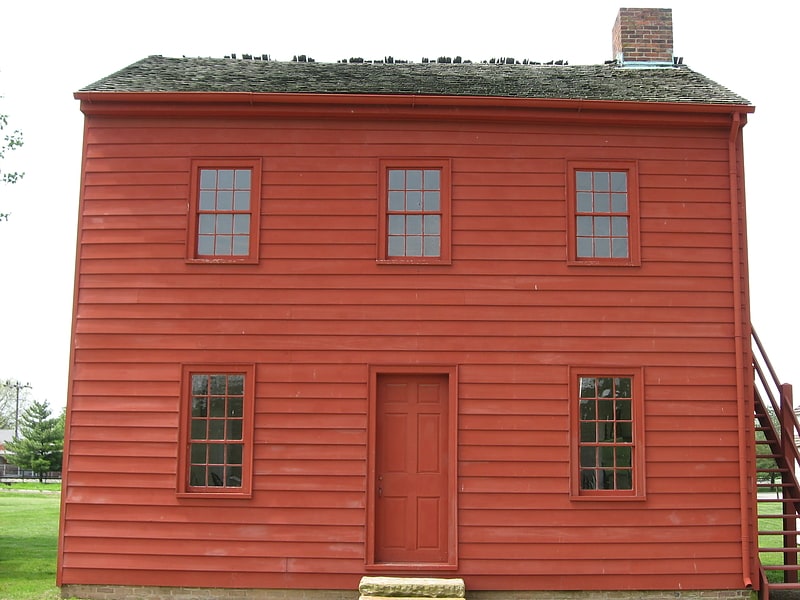
Tourist attraction in Vincennes, Indiana. The Indiana Territorial Capitol, also known as the Indiana Territory State Memorial and Legislative Hall, is part of a state historical site in Vincennes, Indiana. Part of a row of buildings located across from Vincennes University, the building was the center of government for the Indiana Territory from 1800 to 1813. It was built between 1800 and 1805, and is a simple two-story frame building. It was moved to its present site in 1949.
The building was added to the National Register of Historic Places in 1973. It is located in the Vincennes Historic District.[6]
Pyramid Mound
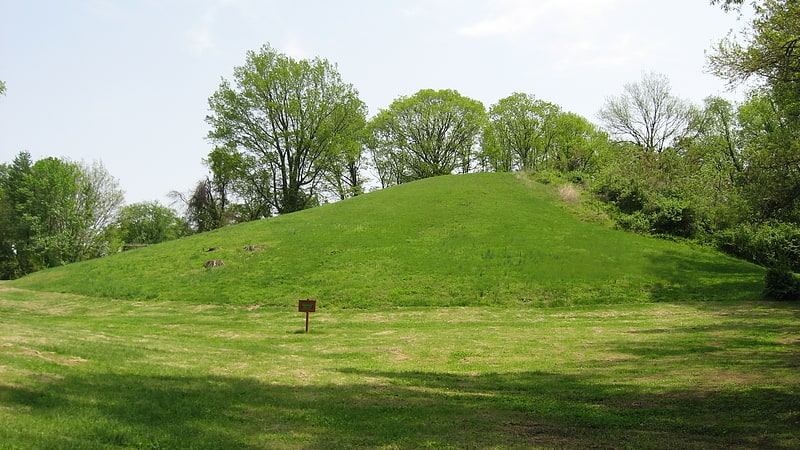
Pyramid Mound, designated 12k14, is a locally important archaeological site at the city of Vincennes in the southwestern part of the U.S. state of Indiana. Located on the city's edge, this substantial loess hill bears evidence of prehistoric occupation, and it is a landmark to the city's contemporary residents.[7]
Old Town Players
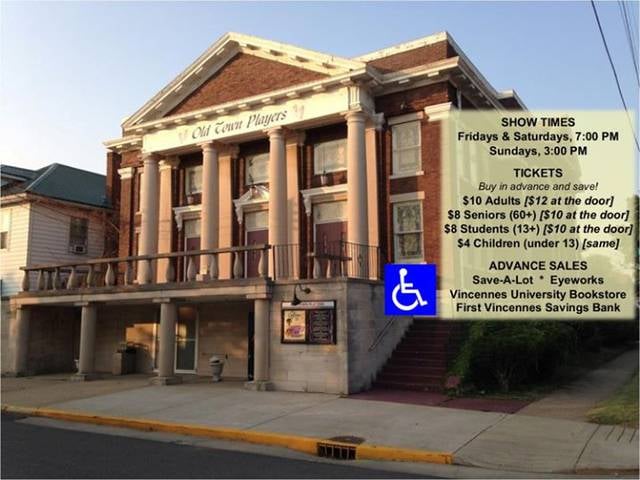
Concerts and shows, Theater
Address: 432 Broadway St, Vincennes
Vincennes Fortnightly Club
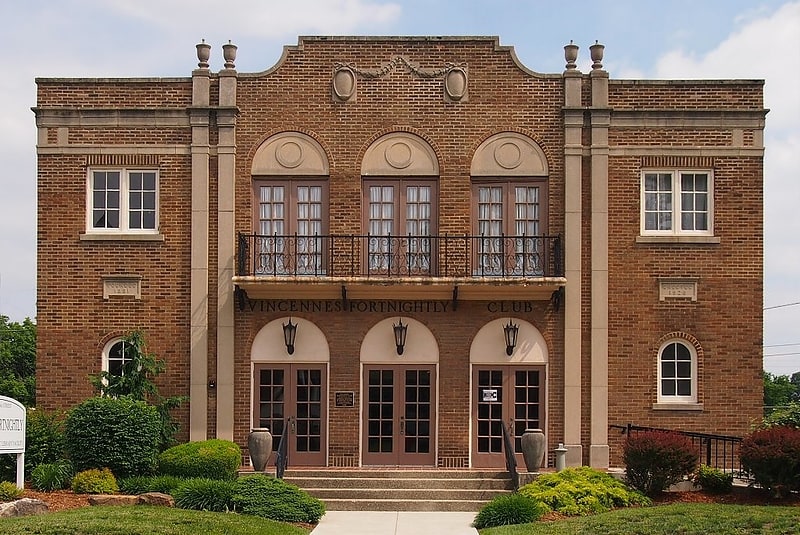
Building. Vincennes Fortnightly Club is a historic Women's club clubhouse located at Vincennes, Knox County, Indiana. It was built in 1928, and is a two-story, Colonial Revival style brick and Indiana limestone building. The tripartite front facade features arched openings and a decorative metal railed balcony on the second floor. The dumbbell shaped building consists of a main entrance block, auditorium, and rear stage section.
It was added to the National Register of Historic Places in 2000.[8]
Hack and Simon Office Building
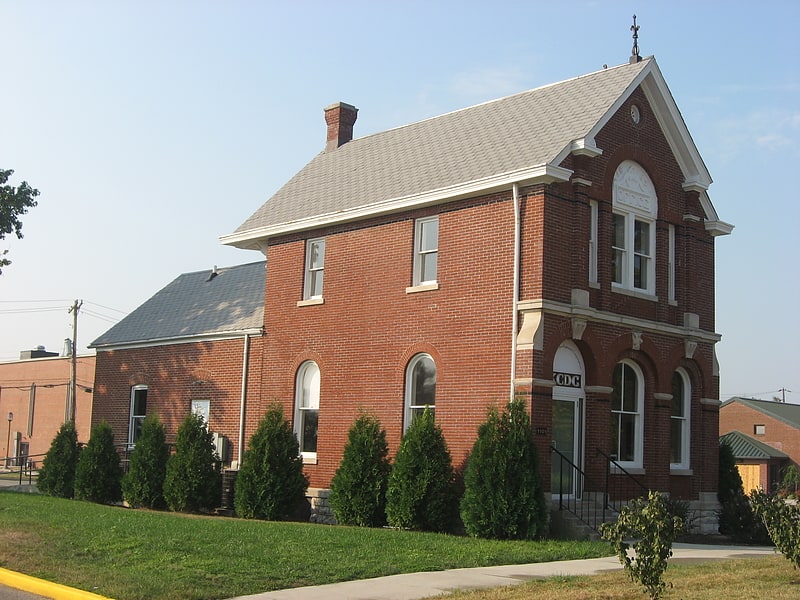
Hack and Simon Office Building, also known as the Eagle Brewery Office Building, is a historic office building located at Vincennes, Knox County, Indiana. It was built in 1885, and is a two-story, Romanesque Revival style red brick building, with a 1+1⁄2-story rear addition built about 1910. It rests on a limestone foundation and has gable roofs on the two sections. The front facade features arched openings and raised carving of the Eagle Brewery emblem. The building housed brewery and later distillery offices into the 1950s, after which it was acquired by Vincennes University.
It was added to the National Register of Historic Places in 2003.[9]
Old State Bank

Bank in Vincennes, Indiana. The Old State Bank, also known as the Second State Bank, Vincennes Branch, is a historic bank building located at Vincennes, Knox County, Indiana. It was built in 1838, and is a 2+1⁄2-story, Greek Revival style brick building. The building measures 36 feet wide and 48 feet deep. The projecting temple form front facade features four two-story, Doric order columns. The building is topped by a dome with cupola and windows that provide light to the main banking room. The building was restored in 1965.
It was added to the National Register of Historic Places in 1974. It is located in the Vincennes Historic District.[10]